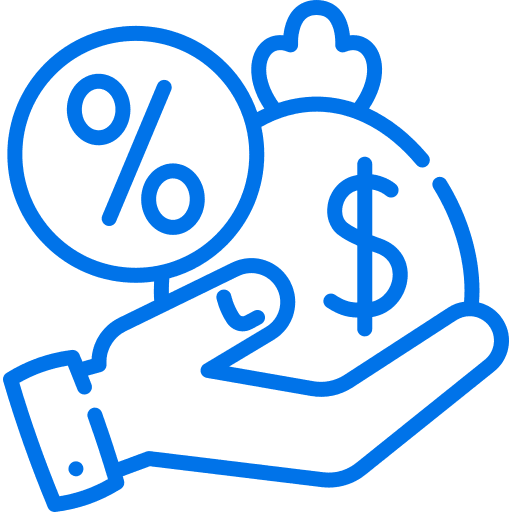Key takeaways
- The private health insurance rebate applies to people with taxable incomes of under $151,001 (singles) or $302,001 (couples or families). These thresholds went up slightly on 1 July 2024.
- The rebate is normally applied as a discount on your premiums, or can be applied at tax time.
- For most people (aged under 65 and at the base income tier) their rebate will be around 24.6%.
What is the private health insurance rebate?
The private health insurance rebate is a government contribution to help with the cost of private health insurance. In other words, it's a a discount on your health insurance premiums.
The Australian government offers this discount to encourage more people to get private health insurance, which takes pressure of the public system (Medicare).
Depending on your income, age, family status and eligibility, you could get almost a third off the price of your premium.
Finder survey: What percentage of Australians have private health insurance for tax reasons?
| Response | WA | VIC | SA | QLD | NSW |
|---|---|---|---|---|---|
| For tax reasons | 16.04% | 13.7% | 10.67% | 9.64% | 17.25% |
Data for ACT, NT, TAS not shown due to insufficient sample size. Some other states may also be excluded for this reason.
Private health insurance rebate tiers (2024)
Not everybody gets the same discount. There are tiers to determine how much the government will help out.
Base Tier
Single Income: $101,000 or below
Family Income: $202,000 or below
| Age | Rebate |
|---|---|
| 65 and under | 24.608% |
| 65 to 69 | 28.710% |
| 70 and over | 32.812% |
Tier 1
Single Income: $101,001 to $118,000
Family Income: $202,001 to $236,000
| Age | Rebate |
|---|---|
| 65 and under | 16.405% |
| 65 to 69 | 20.507% |
| 70 and over | 24.608% |
Tier 2
Single Income: $113,001 to $151,000
Family Income: $226,001 to $302,000
| Age | Rebate |
|---|---|
| 65 and under | 8.202% |
| 65 to 69 | 12.303% |
| 70 and over | 16.405% |
Tier 3
Single Income: $151,001 or above
Family Income: $302,001 or above
| Age | Rebate |
|---|---|
| 65 and under | 0.000% |
| 65 to 69 | 0.000% |
| 70 and over | 0.000% |
These rates have come into effect as of 1 July 2024. If you are a single parent or a couple (including de facto couples), use the family tiers. For families with children, the thresholds go up by $1,500 for each child after the first.
Who is eligible for the rebate?
You're eligible for the rebate if your taxable income is under $151,000 a year as a single or $302,000 as a couple or family (the threshold increases by $1,500 for every dependent child after the first). You also must:
- Be eligible for Medicare
- Hold a complying health insurance policy with an Australian-registered health insurer or
- Be a private health insurance beneficiary (for example, the dependent child of a policy-holder)
- Have an income that is less than the Tier 3 threshold
How do I get the private health insurance rebate?
If you're eligible for the private health insurance rebate, you can get it one of two ways:
Through premium reductions
Your private health insurer can apply the rebate to your health insurance premiums. To claim the rebate upfront, you'll have to contact your health fund to let them know your rebate tier. Your provider applies the rebate directly to lower the cost of your premium.

In your tax return
When you lodge your yearly tax return online, you can claim your rebate as a lump sum (after paying a standard insurance premium throughout the year). The ATO can apply the rebate automatically when you enter the relevant information from your private health insurance tax statement into your tax return.
Unlike the Medicare Levy Surcharge, you can claim the rebate for any insurance policy, whether that's extras cover, hospital cover or a combined package.
What happens if I choose the wrong income tier?
If you choose to claim the private health insurance rebate as a premium reduction, you'll be asked to select a tier based on your estimated income – usually you do this when you take out or renew a policy.
- If you select a higher tier than your actual income for the year, you should receive a tax offset through your income tax return for that financial year.
- If you select a lower tier than your actual income for the year, your income tax return for that financial year might come with a 'tax liability', meaning you owe money. There are no other consequences for incorrect estimates.
Frequently asked questions
Sources
More guides on Finder
-
Tax claim codes and benefit codes
Unsure of how to complete the Medicare Levy Surcharge section of your tax return or claim your rebate? This article can help you.
-
Lifetime Health Cover Loading
Are you over 31 years of age and don’t have private hospital cover? Then read this guide, because it could save you a LOT of money in the future.
